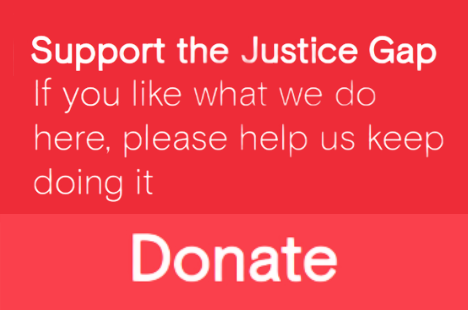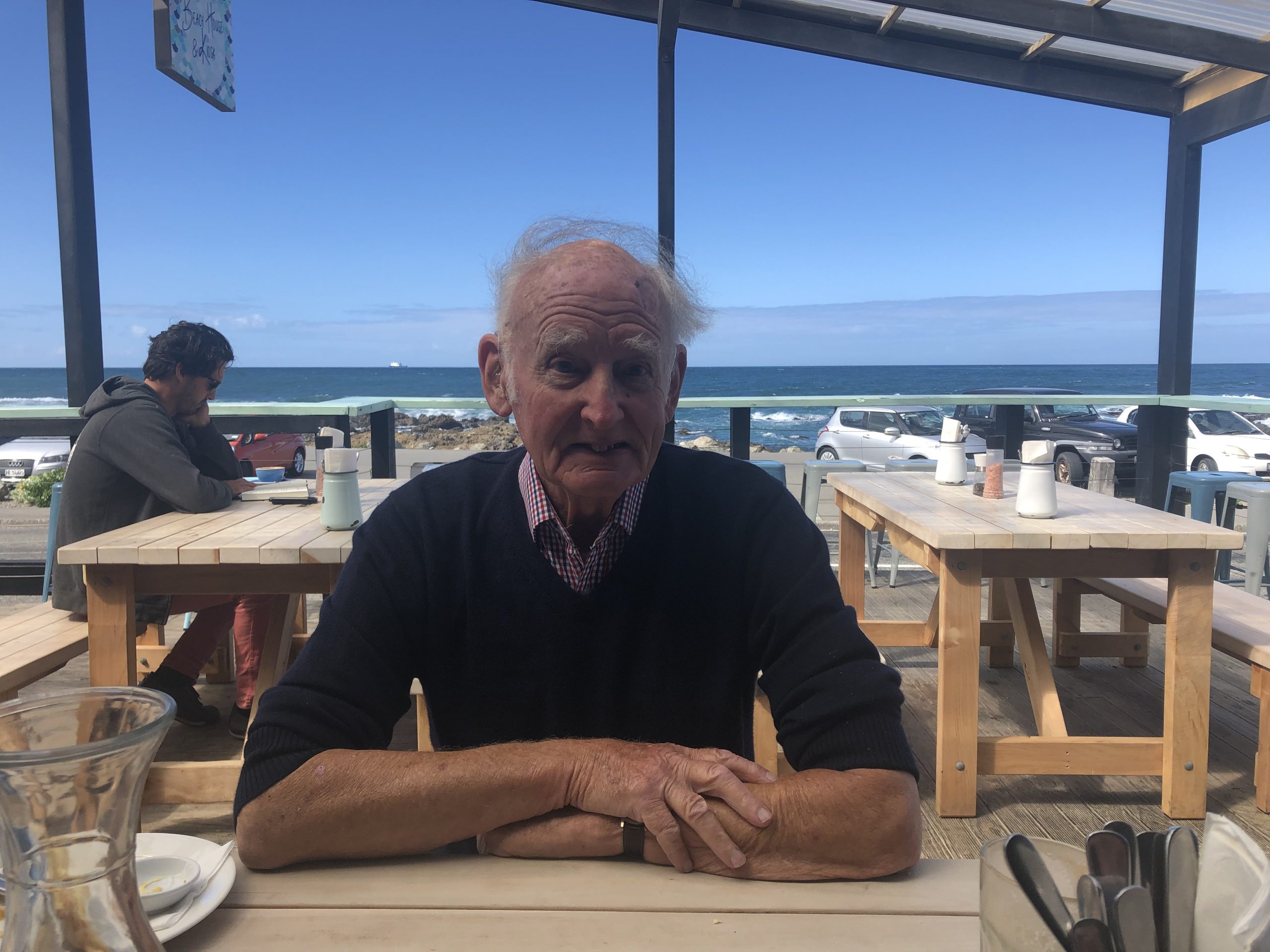‘Everyday I get up I think about the case. I open my eyes in the morning and it’s the first thing on my mind,’ says Paul Caddick, brother-in-law of Eddie Gilfoyle.
It was Caddick who made the grim discovery on June 4 1992: Paula Gilfoyle hanging from a beam in the garage of their home in Upton, on the Wirral. She was eight and a half months pregnant and seemingly happy – and, as the jury in the trial was told, pregnant women don’t kill themselves.
A suicide note was found. It was the prosecution case that Eddie, a hospital orderly, tricked his wife into writing the letter, persuaded her to climb a step ladder up and put her head in the noose. The police treated Eddie’s case as suicide for a number of days, until approached by friends of Paula unable to accept that she had taken her life. Two of her ex-work mates said that she had told them that Eddie had her writing suicide notes as part of a work project. Eddie, they said, had told Paula he was doing a ‘suicide course’ at work.
Eddie Gilfoyle always protested his innocence and claims to have served 18 years in prison for a crime he did not commit. There were serious concerns about the safety of the conviction right from the start.
His local MP, Lord David Hunt, a minister in the Thatcher government, took up Gilfoyle’s case in the 1990s; the assistant chief constable of Merseyside, Alison Halford called the case ‘a rank injustice’ in 2000; and the forensic psychiatrist David Canter, who had told police that the suicide note might be faked and whose evidence formed part of the prosecution, has since switched sides.
Since Eddie Gilfoyle’s release in 2000, what remains of the original prosecution case has unraveled to an alarming degree and yet his case seems forever stuck in the system. The miscarriage of justice watchdog the Criminal Cases Review Commission was presented with shocking new evidence six years ago but has yet to make a decision. Last year a report by the House of Commons’ justice committee into the CCRC quoted Paul May, who chaired the Birmingham Six campaign and has run many miscarriage campaigns, calling the delay a ‘disgrace’.
Tangled web
Last week there were yet more revelations as The Times reported a ‘police cover-up exposed 23 years after husband’s murder trial’. ‘Has a more tangled web ever been weaved by British police than that around the case of Eddie Gilfoyle?’ asked investigations editor Dominic Kennedy.
- You can read the Times articles and much more on www.eddiegilfoyle.co.uk (here)
- You can read Eddie’s sister Sue Caddick’s account (here)
- The journalist David Jessel made a Trial & Error on the Gilfoyle case in 1996. He interviewed Eddie Gilfoyle for the Justice Gap in 2013 here.
‘There is more than enough evidence now that this conviction is unsafe – it should be referred,’ Gilfoyle’s brother-in-law Paul Caddick tells the Justice Gap. Caddick was a 34 year old police sergeant based at Upton with a bright career ahead of him when he found Paula’s body.
‘When I joined the police in 1976, I thought the system worked,’ he says. ‘I thought that the police get it right nearly all the time. If they didn’t then, then it was one bad apple in the barrel who made the mistake and should be punished.’
Caddick’s career came to an abrupt end in June 1992. He was signed off sick immediately and after the trial the following year retired on medical grounds. He is not anti-police. ‘Most do a great job,’ he says.
‘The whole judicial system – the police, CPS and all the rest – swings on the impartiality of the officer who investigates,’ Caddick tells me. ‘In this case, the impartiality of these officers was interfered with by the police hierarchy. They were compromised by their own bosses. You should never interfere with the impartiality of the police officer. It is the cornerstone of the entire system. That interference has always been what worried us. That is why we have pursued and pursued this case.’
The metal box
It has been almost six years since explosive evidence emerged about the Gilfoyle case that seemed to move the case from one that was always troubling to one that demanded urgent review.
In August 2010 Gilfoyle’s solicitor Matt Foot turned up at Bebington police station on the Wirral having been given consent to view the unused exhibits. This included a padlocked metal box containing diaries revealing a very different side to the ‘happy-go-lucky’ Paula depicted by the prosecution at the trial. There was a previous suicide attempt, plus the suicide threat of her first boyfriend Mark Roberts. In 1976 when Paula was 17, Roberts, had sex with a girl in a park, strangled her and dumped her body in a lake. Whilst he served life, Paula bought him a wedding ring. A suicide letter to her from another fiancé noted how he ‘only saw her happy when her friends were around’.
Last week and there were yet more revelations undermining the integrity of the investigation. Detective Superintendent of Graham Gooch of Lancashire was appointed by the Police Complaints Authority in 1993 to look into complaints by the Gilfoyle family about the handling of the murder investigation. Back then, Gooch came to the conclusion that Paula took her own life.
For the first few days, the police treated Paula’s death as suicide. The early stages of the investigation were highly irregular and no regard was paid to securing evidence. After Paul Caddick, who was off duty and looking for Paula at the request of Eddie’s father, PC Brian Jones was one of the first police officers to arrive on the crime scene. He was actually the Coroner’s Officer and assumed the role of investigating officer. His first thought was suicide.
Jones cut the rope and laid Paula’s body on the floor to, as he later put it ‘preserve her dignity’. ‘There’s nothing for you,’ Jones told two CID officers when they arrived.
None of the usual crime scene protocol was followed. Officers tramped back and forth across a pile of builders’ sand outside the garage losing what could have been crucial foot print evidence. No photographs were taken of the suspended body.

The missing notes
On starting his investigation Graham Gooch wanted to see notes taken by police during an earlier internal inquiry led by Chief Superintendent Humphreys into their own mistakes at the scene. Gooch went straight to Humphreys. ‘We did not take any statements at all and to the best of my recollection no notes were taken,’ he said. He was repeatedly assured no such notes existed.
Twenty two years have passed since Gooch looked into the Gilfoyle case and it is only the last few weeks that he has read notes. As reported in last week’s Times, there were some 50 pages of new documents including ‘timings of Gilfoyle’s movements and his wife being “OK” when he left home’. The notes record debate over paternity because there was ‘doubt about child, admitted he not father a while ago. Pressure building up as birth gets nearer . . . she had marital problems and was upset.’
‘All these matters were pertinent to the investigation and should have been available to me in my inquiry into the complaints. They should also have been offered to the defence,’ Gooch said.
Perhaps even more significant though is that the newly-released papers also give even more credence to what has long been a contention of the Gilfoyle campaign: that the Coroner’s Officer being one of the first on the scene – effectively taking control and, in doing so, losing vital evidence – was the result of a highly unusual local policy and not, as had been suggested at the trial, an officer exceeding his powers. The family argues that this local policy required the police control room to call out the Coroner’s Officer in all deaths including suicides which was, in their view, a disaster waiting to happen.
Amongst the new paperwork there is a memorandum from the same officer in charge of the family’s complaint, Chief Superintendent Tony Isaac, reminding officers to follow this policy.
During his 1993 investigation, Gooch was never even knew there was such policy. He said last week: ‘In the circumstances of these complaints where the main problem seems to have stemmed from the policy he promulgated it looks like a professional conflict for Isaac not to have distanced himself from this complaint.’
‘We made our complaint back in 1993,’ Caddick says. ‘That complaint was frustrated by the hierarchy in Merseyside police. The person dealing with our complaint was also involved in what we would argue was a cover-up of the failings by the senior officers. Not only that but he was also misleading the police officer investigating the complaint, Graham Gooch and the PCA. How could Eddie possibly get a fair trial in these circumstances if this sort of evidence was being withheld from the trial?’
‘For a wrongly convicted man to learn that for the second time significant material showing what actually happened, now in relation to critical scenes of crime investigation, was withheld, the only explanation is not only total systems failure but thereafter, equally importantly, its complete concealment,’ says solicitor Matt Foot. ‘This family asked for the truth in 1993, they deserve it now and an apology.’
Caddick reckons that the policy of calling our the Coroner’s Officer first in all suspicious death cases was bound to go badly wrong at some point – and that senior Merseyside officers belatedly came to the same realization.
‘What they couldn’t afford to happen was for this case to go to the Coroner’s Court,’ he says. ‘The job of an inquest is to find out how a person died. The first thing that they would ask is where is the police evidence and, of course, all that was destroyed.’
‘They wanted to drive this case to trial. It was better for them to get a conviction. They wanted Eddie to be found guilty because that would exonerate them all. Nobody would care. Everybody would be fire-proof.’
Paul Caddick
Dropped like a stone
Leading up to the trial, Paul Caddick was advised by his immediate boss, the superintendent of his subdivision to take sick leave. ‘I was more than happy to do that,’ he recalls. ‘I never wanted my integrity to be brought into question. But also I was sick. I was stressed to hell.’
Caddick recalls his horror at the way the trial progressed. ‘I was just waiting for this massive chunk of evidence to be revealed at trial to tell us why they even thought Eddie guilty. It never materialised. The jury’s decision was a complete shock. I was devastated after the trial – for a long time I just stayed on the sick.’
In 1992 Alison Halford was Britain’s most senior policewoman (and was having her own problems with Merseyside police). Halford, responsible for promoting Paul Caddick to sergeant, has described him as a ‘fine officer who has lost a career because of the Gilfoyle case’. She has called the case ‘a huge miscarriage of justice’.
Caddick never went back to work. Shortly after the trial, the Force doctor turned up to his house and he was told that he was going to be retired on medical grounds. ‘It was a massive shock. I understand why they got me out of the police – yes, I would have been a nuisance – I was furious at the time but came to understand that I could no longer wear the uniform. I accepted retirement for the sake of myself and my family. They ruined my career and the rest of my life.’
The family no longer lives in Merseyside. ‘When you are a serving police officer, all your friends are police officers all your wife’s friends are policemen’s wives,’ he says. ‘Up to the trial our closest police friends were there for us. Once the trial was over and done with, we were dropped like a stone.’
The crushing disappointment of the trial was repeated in the 2000 appeal.
‘When we got the first appeal, we thought everybody would see what this was all about. I expected the judges to put it right. That’s where I though the safety net was. I was astounded. It’s not about justice. It’s about maintaining the integrity of the jury. That’s what I have learned. It has been a shock.’
Paul Caddick
How is Eddie? ‘He finds lots of things difficult to cope with. He hasn’t the life like we would like for him to have,’ Caddick replies. ‘Nor can he have one with this hanging over his head. He is a sad soul.’
Gilfoyle left prison six years ago under a gagging order that prevented him, his family, campaigners and even sympathetic MPs from talking to the press which was challenged by his lawyers and dropped. Now 54 years old, Eddie Gilfoyle sees a psychiatrist every week for counselling and is supported by a social care worker. He is still on licence which, his brother-in-law says calls ‘the cosh that he is held over him’.
Are you confident Eddie will clear his name? ‘Yes, it can’t go like this,’ Caddick says. Will he have any quality of life left? ‘I think Eddie will feel a bit better and he might be able to move on to a degree. But it will be a long, slow process. He’s a damaged person. It is awful what the system does to people.’







